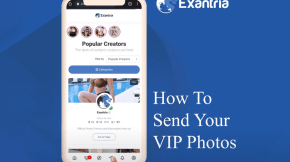The Power of Storytelling: Captivate Your Audience as a Content Creator
Share

As a content creator, your ultimate goal is to captivate your audience, leaving them eagerly awaiting your next piece of content. While there are numerous strategies to achieve this, one of the most potent and time-tested methods is the art of storytelling. Stories have an inherent ability to connect with people on a deep emotional level, making them a compelling tool for engaging and retaining your followers. In this article, we’ll explore the power of storytelling and how you can harness it to become an influential content creator.
Understanding the Impact of Stories
Since ancient times, storytelling has been an integral part of human communication. From cave paintings and oral traditions to modern-day novels and films, stories have been used to pass down knowledge, evoke emotions, and entertain. As a content creator, you have the opportunity to leverage this ancient tradition to make your content more relatable and memorable.
When you tell a story, you take your audience on a journey. Whether it’s a personal anecdote, a fictional narrative, or a case study, stories have a way of transporting people into different worlds. This immersive experience captivates their attention and keeps them invested in your content.
The Elements of Compelling Storytelling
To craft compelling stories, consider incorporating the following elements:
1. Character Development
Introduce relatable and well-developed characters into your stories. Whether it’s yourself, someone you know, or a fictional persona, well-rounded characters add depth and emotional resonance to your content.
2. Conflict and Resolution
Every great story has a conflict that the characters must overcome. This struggle creates tension and keeps your audience engaged. Be it a personal challenge or a broader societal issue, explore how the conflict is resolved to provide a sense of closure.
3. Emotionally Charged Moments
Emotions are powerful motivators. Tap into your audience’s feelings by including emotionally charged moments in your stories. Whether it’s joy, sadness, fear, or hope, emotions forge a strong bond between you and your audience.
4. Vivid Descriptions
Paint a vivid picture with your words. Descriptive language helps your audience visualize the setting, characters, and events, making the story more immersive and engaging.
5. Authenticity and Vulnerability
If you’re sharing personal stories, embrace authenticity and vulnerability. Being open about your own struggles and triumphs makes your content more relatable and humanizes your brand.
Incorporating Storytelling Into Different Content Formats
Storytelling can be applied to various content formats. Here are some ways to use storytelling effectively:
1. Written Content
In blog posts, articles, or social media captions, use storytelling to introduce your topic and draw readers in. Share relevant anecdotes or case studies to support your points and provide real-life examples.
2. Video Content
Videos are an excellent medium for storytelling. Create vlogs, documentaries, or scripted videos that follow a narrative structure. Use visuals and music to enhance the emotional impact of your stories.
3. Podcasts
Audio storytelling allows you to use the power of voice to convey emotions. Share personal experiences, conduct interviews, or narrate fictional tales through podcasts.
4. Social Media Stories
Take advantage of platforms like Instagram and Facebook Stories to share short, captivating narratives. These temporary posts create a sense of urgency, encouraging your audience to engage immediately.
Measuring the Impact of Your Stories
While storytelling is a powerful tool, it’s essential to measure its effectiveness. Track metrics like engagement, shareability, and feedback to see how your audience responds to your stories. Use analytics to identify which stories resonate the most and refine your storytelling approach accordingly.
Conclusion
As a content creator, mastering the art of storytelling can set you apart and establish a strong connection with your audience. By incorporating well-developed characters, conflicts, emotions, and descriptive language into your content, you can captivate your audience and leave a lasting impression. Whether through written articles, videos, podcasts, or social media posts, storytelling is a timeless technique that will elevate your content and help you become an influential content creator.
FAQs
- Can I use storytelling in content that promotes products or services? Absolutely! Storytelling can be used effectively in promotional content as well. By weaving a compelling story around your products or services, you can create a more personal connection with potential customers.
- What if I’m not a natural storyteller? Storytelling is a skill that can be developed with practice. Start by observing how other storytellers craft their narratives and experiment with different storytelling techniques until you find your unique voice.
- Can I reuse the same stories across different platforms? While some core stories can be adapted, it’s essential to tailor your content for each platform’s format and audience. Customizing your stories will ensure they resonate with the specific demographics on each platform.
- Is it necessary to reveal personal details in my stories? Sharing personal details is optional and depends on your comfort level. Only share what you feel comfortable with and what aligns with your brand’s identity. Authenticity is essential, but it doesn’t mean divulging everything about your life.
- How do I ensure my stories align with my content niche? While storytelling is versatile, it’s crucial to keep your content relevant to your niche. Ensure that the stories you tell are related to your core topics and provide value to your target audience.







